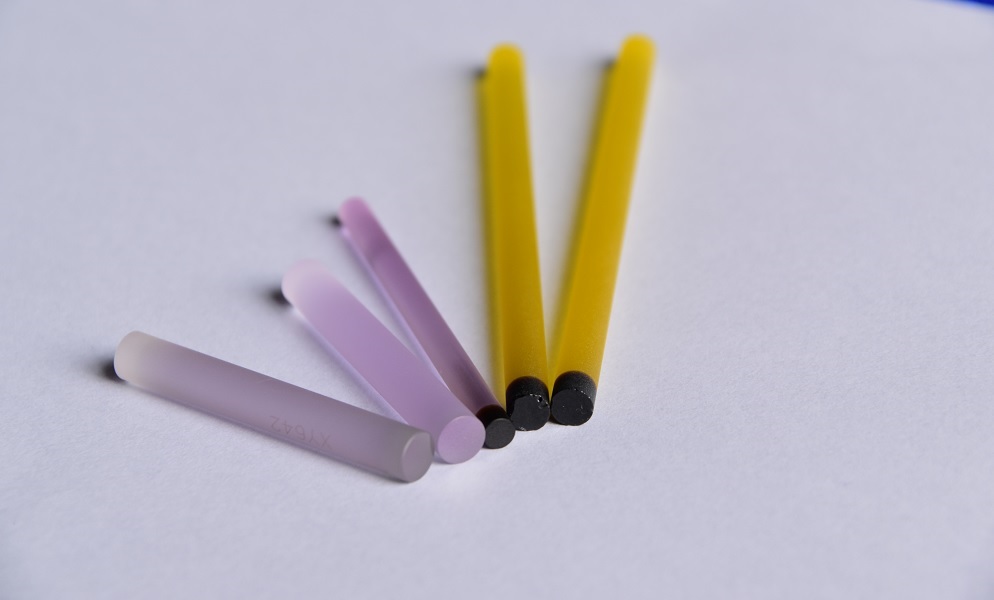However, to determine the degree of overheating, the microstructure must be observed. If acicular martensite appears in the quenched structure of GCr15 steel, the quenched superheated structure is quenched. The cause may be the overheating caused by too high quenching heating temperature or too long heating and holding time; or it may be due to the severe banded carbides of the original organization, and the formation of local martensite needle-like coarseness in the low-carbon zone between the two bands. Local overheating caused. The amount of retained austenite in the overheated tissue increases, and the dimensional stability decreases. Due to the overheating of the quenched structure, the crystals of the steel are coarse, which leads to a reduction in the toughness of the parts, a reduction in the impact resistance, and a reduction in the life of the bearings. Severe overheating can even cause quench cracks.
2. Undercooling at low temperatures or poor cooling results in the formation of more than the standard fornitic microstructure in the microstructure, known as under-heating, which reduces hardness and wear resistance, which can affect bearing life.
3. Quenching cracks in quenched bearing parts due to internal stresses in the quenching process are called quench cracks. The causes of such cracks are: due to the quenching heating temperature is too high or the cooling is too rapid, the thermal stress and the metal mass volume change when the tissue stress is greater than the steel's fracture resistance; the original surface defects (such as surface micro cracks or scratches Traces) or internal defects in the steel (such as slag inclusions, severe non-metallic inclusions, white spots, shrinkage remnants, etc.) which form stress concentrations during quenching; severe surface decarburization and carbide segregation; parts tempered after quenching Or not tempered in time; the previous process caused by the excessive cold punching stress, forging folding, deep turning tool marks, sharp edges and other oil groove. In short, the cause of quench cracking may be one or more of the above factors, and the presence of internal stress is the main reason for the formation of quench cracks. The quenched cracks are deep and slender, the fractures are straight, and the broken section has no oxidation. It tends to be longitudinal cracks or toroidal cracks in the bearing ring; S-shaped, T-shaped or ring-shaped on the bearing steel ball. The microstructure of quenched cracks is that there is no decarburization on both sides of the crack, which is obviously different from forging cracks and material cracks.
4. During the heat treatment of the heat-treated deformed bearing parts, there are thermal stress and tissue stress. This internal stress can superimpose or partially cancel each other. It is complicated and variable because it can follow the heating temperature, heating rate, cooling method, cooling rate, Changes in the shape and size of parts change, so heat treatment deformation is inevitable. Understanding and mastering its changing laws can make the deformation of bearing parts (such as the ellipse of the ferrule and the size increase) be placed in a controllable range, which is conducive to the production. Of course, mechanical collisions during heat treatment can also deform the part, but this deformation can be reduced and avoided with improved operation.
5. Surface decarburization bearing parts in the heat treatment process, if it is heated in an oxidizing medium, the surface oxidation occurs to reduce the surface carbon mass fraction of parts, resulting in surface decarburization. Depth of the surface decarburized layer beyond the final machining allowance will scrap the part. The determination of the depth of the surface decarburized layer can be used in the metallographic examination of the metallographic method and microhardness method. The criterion of surface microhardness distribution curve shall prevail, and can be used as arbitration criteria.
6. The phenomenon of insufficient local hardness of the bearing parts due to insufficient heating, poor cooling, improper quenching operation, etc. is called quenching soft point. Like surface decarburization, it can cause a serious reduction in surface wear resistance and fatigue strength.
Laser crystals of various materials including Neodymium Doped Yttrium Aluminum Garnet (Nd:YAG), Yb-doped Yttrium Aluminum (Yb:YAG), Nd-doped Yttrium Orthovanadate ( Nd:YVO4 ), Nd-doped Gadolinium Orthovanadate ( Nd:GdVO4 ), Cr doped Yttrium Aluminum Garnet ( Cr4+:YAG ) and diffusion bonded composite crystal ( DBC crystal ) are available from Coupletech Co., Ltd.
Coupletech could supply many kinds of Laser Crystal with larger dimension, higher damage threshold, higher conversion efficiency and higher reliability for higher power Solid-state laser applications. We have strict quality control and continuous innovation. Coupletech's various finished laser rods, laser crystal, slabs and thin wafers as well as supplying laser crystal with brewster's angle, which is widely for use in industrial, medical and scientific applications.

S
Laser Crystal
Yb:YAG Crystals,Nd:YAG Crystals,Nd:YVO4 Crystals,Cr:YAG Crystals,Diffusion Bonded Crystals
Coupletech Co., Ltd. , https://www.coupletech.com